The Liberation Press Agency (LPA) -- the wartime southern advance element of the Vietnam News Agency (VNA) -- was one of 15 collectives bestowed the title “Hero of the People’s Armed Forces” by President Nguyễn Phú Trọng for its illustrious achievements during the anti-American war.
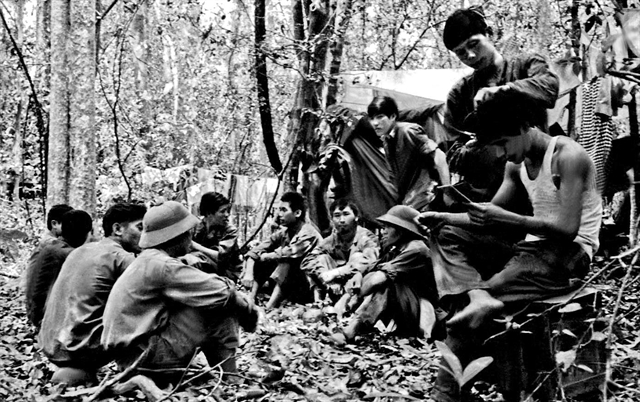
TO THE STORY: A team of young journalist from GP10 class in Hà Nội on the way to the south to support their colleagues in the Liberation Press Agency. VNA/VNS File Photo
Liberation Press Agency
The Geneva Agreement, signed in 1954, ended the French war and established peace in Indochina, temporarily dividing Việt Nam into two parts, the north and the south, overseen by two separate administrations before a general election was held nationwide within two years.
However, the Ngô Đình Diệm administration in the south, aided and abetted by the Americans, spared no effort in undermining the agreement, refusing to co-operate with the Democratic Republic of Việt Nam on organising the general election while attempting to oppress patriots and the revolutionary movement.
In 1960, with a complex situation having emerged in the south, the revolutionary movement changed from political struggle to political combined with armed struggle.

TRADECRAFT: A skills exchange between journalists at the Liberation News Agency in Chàng Riệc Forest, Tây Ninh Province. VNA/VNS File Photo
What must be must be. The National Liberation Front of South Việt Nam (NLF) came into being on December 20, 1960 in Tây Ninh Province to confirm the revolutionary movement's official status and reinforce revolutionary guidance in the south.
Two months earlier, to prepare for the announcement of the birth of the NLF, Giải Phóng Xã, or the LPA, was established on October 12, 1960, also in Tây Ninh.
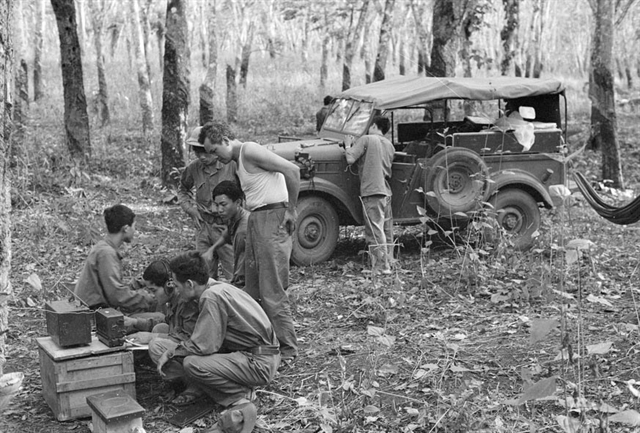
ON THE SCENE: A journalist task force sent by the Hà Nội-based Vietnam News Agency to the south to report on the Hồ Chí Minh Campaign in April 1975 from a local forest. VNA/VNS File Photo
The LPA stated in its opening dispatch from the war zone: “The Liberation Press Agency is the official news agency of the National Liberation Front of South Việt Nam and has the duty of providing news, telling of the diverse fighting experience of people all over the country, and reflecting the increasing power of the revolutionary movement and the inevitable collapse of the rulers in the south. The agency will also expose plots by the enemy and clarify guiding policies on the revolution."
In completing those functions and duties, the LPA was a pioneer in information provision and publicity tasks. It became the main agency within revolutionary media during the anti-American war and the initial period of the country’s post-war reunification.
As the official agency of the NLF and then of the Provisional Revolutionary Government of the Republic of South Việt Nam (PRG), the LPA sent news reflecting actual events on the battlefield as well as the liberated areas in the south to Hà Nội every day.
It became a crucial source for various news offices in Việt Nam and overseas, via the Hà Nội-based VNA.
News goes out amid battle
With the slogan “non-stop wave”, and only some 15W broadcasters at hand, LPA staff worked on improving their technical equipment, with support from various other agencies.
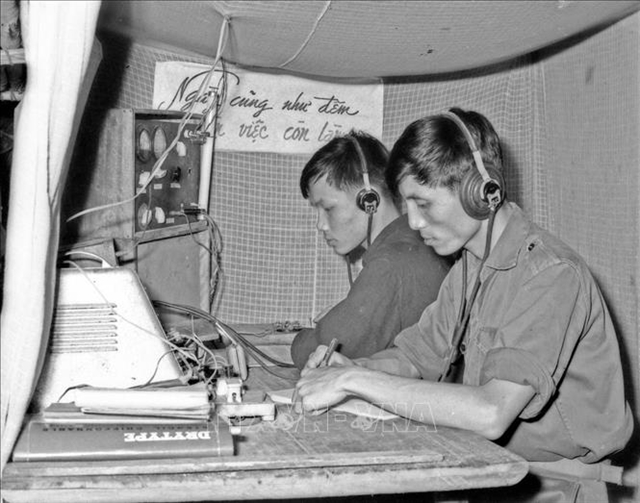
KEY LINK: Telegraphists at the Liberation Press Agency in Tây Ninh Province. VNA/VNS File Photo
The LPA quickly obtained the facilities needed and ensured a high level of security among information agencies in the south at that time.
During its 15 years of operation, between 1960 and 1975, the LPA moved its temporary office dozens of times to ensure the non-stop supply of information.
News and photos from the agency’s reporters and photographers covered unfolding events from Cà Mau to Quảng Trị, from the jungles of U Minh Thượng to the lights of Sài Gòn, providing information not only to citizens in the south but also to revolutionary forces, so they may analyse the situation and make strategic decisions.
The LPA also nurtured favourable international public opinion on the struggle of the Vietnamese people on both the military and diplomatic fronts, creating a powerful tool in the quest for ultimate victory over the Sài Gòn regime in April 1975.
LPA journalists were present at all major battles. Comprehensive information on victory at Ấp Bắc in 1963 and Bình Giã in 1964 and the General Uprising and Offensive during Tết (Lunar New Year) in 1968 was sent to Hà Nội in the shortest possible time.
In the historic Hồ Chí Minh Campaign in 1975, LPA journalists, together with their colleagues from VNA, followed the main advancing forces and quickly sent news to Hà Nội on the fighting and battles.
Historic moments were captured for prosperity, such as the image of a tank entering Independence Palace in Sài Gòn on April 30, 1975, taken by journalist Trần Mai Hưởng, or the photo “Mother and Son” taken by photographer Lâm Hồng Long, recording the reunion of mother Trần Thị Bính in Bến Tre Province and her son Lê Văn Thức, who returned home from death row in Côn Đảo prison on May 6, 1975.
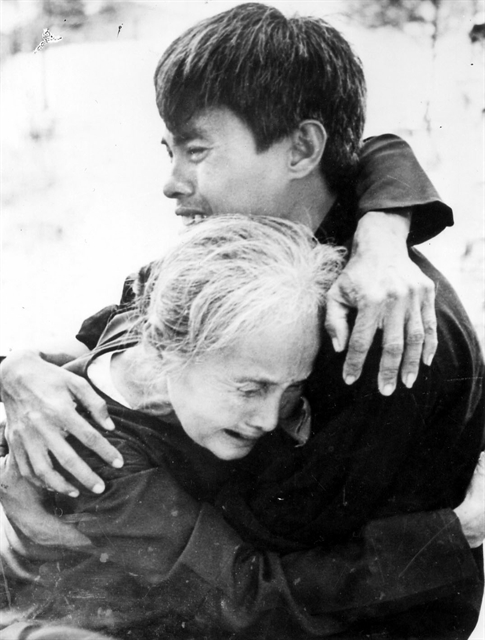
TOUCHING EMBRACE: Mother and Son on Reunion Day, by Vietnam News Agency photographer Lâm Hồng Long.
In addition to information on the war, the LPA acted as the main news source on meetings between delegations from the Democratic Republic of Việt Nam and the PRG, and the US and Sài Gòn delegations at the Paris Peace Conference between December 1967 and January 1968. The first two delegations received news from the LPA every single day.
Holding pens & guns
Every journalist, photographer, technician, and telegraphist of the LPA also carried guns as real soldiers.
They were all equipped with weapons, even anti-tank guns and mortars. They not only protected their bases but also fought on the battlefield.
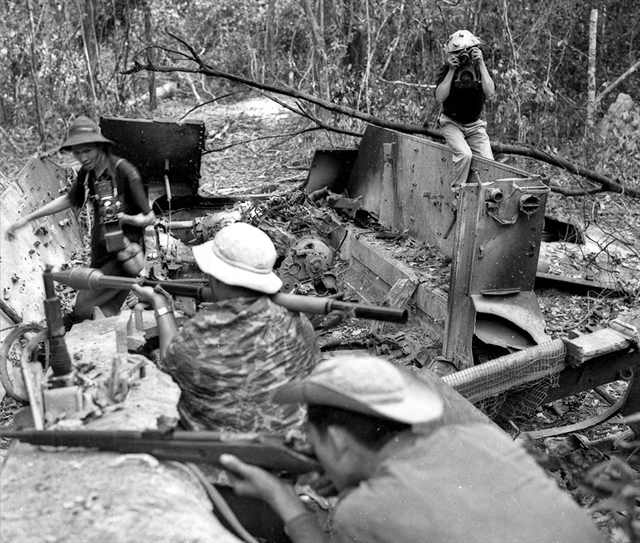
BROTHERS IN ARMS: Staff from the Liberation Press Agency fighting the enemy during the US Operation Junction City in Lò Gò - Xa Mát in 1967. VNA/VNS File Photo
Among news and photos sent from the south to Hà Nội were many prepared just prior to a reporter firing their last bullet and taking their last breath.
In March 1967, journalist Trần Ngọc Đặng fired upon two US-Sài Gòn armoured cars in Tây Ninh and paid for it with his life.
Journalist Trần Văn Minh, meanwhile, who fought with Đặng, was severely injured and was captured by the enemy, who cut off one of his legs.
And female journalist Trương Thị Mai, of the South Central office of the LPA, was caught and tortured but never revealed anything about resistance bases before being killed.
The Kiến Tường news office (in what is today Long An province) in the Mekong Delta was destroyed three times and dozens of journalists were killed in 1968, while the nearby Rạch Giá news office (in Kiên Giang) lost several staffers in five enemy attacks.
The south Central Highlands news office had five out of six members die during bombings in 1969.
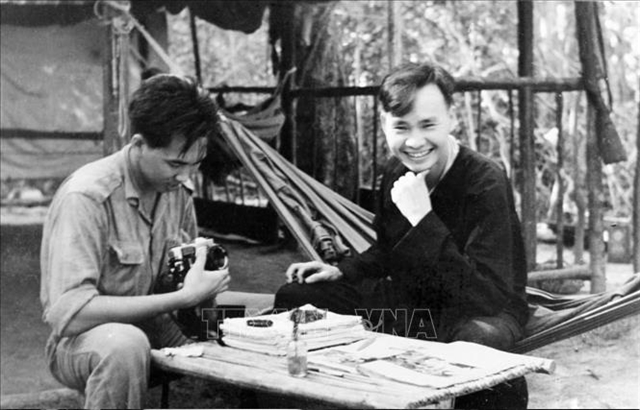
SHARING STORIES: Journalists from the Liberation News Agency at work. VNA/VNS File Photo
Among the martyrs, LPA deputy director Bùi Đình Túy (who used the pen name Đinh Thúy), died in Trảng Dầu (Bình Long) in September 1967, in a bombing. He was the first journalist to have a road named after him, in Hồ Chí Minh City’s Bình Thạnh District.
According to partial statistics, in Việt Nam’s 30 years of war there were 450 media workers who lost their lives, 240 of whom were with the LPA.
Many journalists and photographers were buried where they fell, and their remains are still to be found. Dozens of others were seriously maimed.
While such losses were heart-breaking they were also a source of pride, in the tradition of soldiers being willing to sacrifice their lives to ensure that news of battle reaches the public.
After national reunification in May 1976, the LPA merged into VNA, marking a milestone in the development of the country’s media.
Seventy-fifth anniversary
Seventy-five years ago, on September 15, 1945, VNA published the entire Declaration of Independence and listed the members of the Provisional Government of the Democratic Republic of Việt Nam in three languages: Vietnamese, English and French.
The publication was a meaningful event not only for VNA but also for the Vietnamese people, and that day has since become the national news agency’s Traditional Day.
Its formation and development have always been associated with the independence and liberation cause and nation-building endeavours.
Thousands of journalists from VNA served as soldier-journalists during Việt Nam’s wars of resistance.
With over 260 martyrs, VNA lost more journalists than any other press agency in the country.
Throughout 75 years of fighting, building, and developing together with the country’s development, VNA has been awarded a Hero title three times: Labour Hero in the Renewal Period once and Hero of the People’s Armed Forces twice for the VNA and the LPA.
It was also awarded one Gold Star Order, two Hồ Chí Minh Orders, and two Independence Orders, among other distinctions. VNS
OVietnam